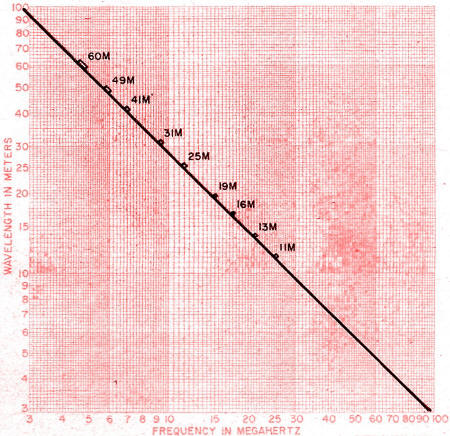|
June 1966 Popular Electronics
 Table of Contents Table of Contents
Wax nostalgic about and learn from the history of early electronics. See articles
from
Popular Electronics,
published October 1954 - April 1985. All copyrights are hereby acknowledged.
|
As with your school and
college days where once there was no longer any reason to memorize physical
constants, conversion formulas, and names of people, places, and things, much of the
noggin's gray matter was repurposed to remember topics of more immediate need. You
can always look up what you have forgotten. While studying for your Ham radio or FCC
license, being able to be able to quickly convert between wavelength and frequency is
essential. Recalling on demand frequency-wavelength pairs is a real time saver on a
timed exam. Even being able to perform the conversion on a calculator during the test
takes up valuable time that could be better used on other tasks. This handy-dandy
chart for converting frequency in MHz to wavelength in meters appeared in a 1966
issue of Popular Electronics magazine. If you are designing an antenna, then you will
still want a calculator; otherwise, if accuracy to a couple significant places will
do, the chart is as useful today as it was back then for at an-a-glance conversion.
Frequency-to-Meter Conversion Chart for Hams & SWL's
 By James G. Lee, W6VAT By James G. Lee, W6VAT
When you're planning to install antennas for various frequencies, it's useful to have
a rough idea of the equivalent wavelengths. You could use the formula: wavelength (meters)
equals 300 divided by frequency (megahertz), but this quick-look chart will give you
almost as precise an answer. The formula is only necessary when you want to cut an antenna
to the nearest fraction of a meter. Calibrated to cover the 3.0- to 300-MHz range, this
chart makes it possible to convert from frequency to meters or vice versa. Read up and
across for meters, across and down for MHz.
Posted July 30, 2018
|




























